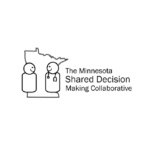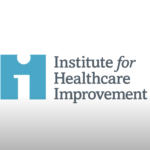What is cultural responsiveness?
Caring for diverse populations starts with culturally responsive care. The first steps to providing culturally responsive care include identifying the diverse populations you are serving, learning more about their cultural practices, and adapting your approach to care to meet your patient’s needs.*
The resources below will help you to advance culturally responsive care in your practice:
- Explore Diversity Information Sheets
- Explore Intersectionality in Health Care
- Explore Trauma-Informed Care
- Adopt a Patient-Centered Care Approach
- Explore Language Resources for Minnesota Health Care Providers
*Understanding the role culture plays in health care is essential. Still, patients are individuals – each person’s preferences, practices, and health outcomes are shaped by many factors, a concept known as intersectionality.
Explore Diversity Information Sheets
Cultural responsiveness is recognizing and understanding the role culture plays in health care and adapting care strategies to meet patient needs. Explore the Diversity Information Sheets to learn more about the background, religious and cultural beliefs, communication preferences, and common health issues of the predominant populations in Minnesota.
Explore Intersectionality in Health Care
Understanding the role culture plays in health care is essential. Still, patients are individuals – each person’s preferences, practices, and health outcomes are shaped by many factors, a concept known as intersectionality.
What is Intersectionality?
No two individuals are the same. Therefore, one needs to understand an individual’s unique identity and experiences to respond to that person’s health-related needs and preferences. Intersectionality can be defined as the complex, cumulative way the effects of various social identities combine, overlap, or intersect to affect a specific individual. Coined in 1989 by Kimberlé Crenshaw, a law professor at Columbia and UCLA, intersectionality is used to explain how the social identities of individuals can overlap. When considering how inequalities persist, categories like gender, race, and class are best understood as overlapping and mutually constitutive rather than isolated and distinct.
An intersectional approach to health care is essential for achieving health equity. Intentionally and meaningfully considering intersectionality deepens the understanding of systemic structures that affect people’s ability to access and receive good health care. Such an approach requires a critical analysis of how people’s health experiences are affected by social identities such as gender, class, race, ethnicity, and sexual orientation.
Intersectionality In Action in Health Care
Think of a person with the following identities:
- Black
- Female
- Lesbian
- Lower socioeconomic status (SES)
Changing one of those identities (race, gender, sexual orientation, economic status) can significantly change the systemic barriers that a person faces in their efforts to address their health and health care needs. How a Black woman is treated in a situation may differ from how a white woman or a Black man is treated in the same situation. LGBTQ+ people also can face discrimination from health care professionals. People with lower SES can face barriers to care. Each source of stigma for specific identities can hinder receiving care. These overlapping identities can impact how individuals are treated when accessing or receiving resources or care through stereotyping, devaluation, discrimination, or judgment.
An intersectional approach to health care delivery examines how certain groups are more prone to disparities due to their identities. Considering the societal stereotypes that may exist when it comes to seeking treatment, it is vital that health care professionals understand these barriers, which can be forms of oppression and result in people fearing judgment as they seek and receive care. As a result of stigma, a person may decide not to seek care, which can detrimentally impact their health. An individual must be holistically seen – and an intersectional approach to health care requires health care teams to understand the role inequities, preconceived notions, forms of oppression, and prejudice can play in a person’s choices in seeking, receiving, and following up on care. An awareness of intersectionality can enable health care team members to offer more respectful, compassionate, and holistic care.
“Intersectionality promotes an understanding of human beings as shaped by the interaction of different social locations, e.g., race, ethnicity, indigeneity, gender, class, sexuality, geography, age, disability/ability, migration status, religion. These interactions occur within a context of connected systems and structures of power, e.g., law, policies, state governments, religious institutions, and media. Through such processes, interdependent forms of privilege and oppression shaped by colonialism, imperialism, racism, homophobia, ableism, and patriarchy are created.”
– Hankysvisky, 2014; Intersectionality 101; Institute for Intersectional Research and Policy
What You Can Do
- Learn more about intersectionality and reflect on how it impacts you in your daily life (in positive and negative ways). Think about and be aware of how your identity and privilege (and/or oppression) affect how you experience the world. Seek to recognize differences. Do your presenting identities (e.g., race, gender, SES, sexual orientation, education) often bring privileges over other people? Or do they cause any oppression for you?
- Explore the diversity information sheets to learn more about identities that differ from your own.
- Seek other points of view. Learn more from people who may have specific combinations of identities to better understand how their identities affect their experience with healthcare.
- Be aware of those at the intersection of multiple identities and how this might compound marginalization. Consider how changes to your organization’s processes could help protect patients against biases based on their identities. Think about how you can create meaningful change to reduce health inequities.
Where to Learn More
- An Intersectional Perspective on Access to HIV-Related Healthcare for Transgender Women | Ashley Lacombe-Duncan
- Intersectionality and Health Explained (3.5-min video) | Sociological Studies at the University of Sheffield
- Intersectionality and Mental Health: A Case Study (19-page PDF)| Janneke van Mens-Verhulst, PhD, Lorraine Radtke, PhD
- Intersectionality in Healthcare | Liji Thomas, MD, News Medical
- The Urgency of Intersectionality TED talk (18 min-video) | Kimberlé Crenshaw
- Using an Intersectional Approach To Study the Impact of Social Determinants of Health for African-American Mothers Living with HIV | Caiola, et al.
- What Intersectionality Means Today | Kimberlé Crenshaw, Time
- What is Intersectionality? (1-min video) | Minnesota Blue Cross Blue Shield
- What is Intersectionality, and How Can I Practice it at Work? | Ethena
Explore Trauma-Informed Care
Trauma-informed care is a framework based on creating an environment that 1) understands and acknowledges that many people have histories of traumatic events and 2) recognizes that health care can be a frightening or threatening experience for someone who has experienced trauma. Trauma-informed care includes practices that promote a culture of safety, patient empowerment, and healing and prevent re-traumatization.
What is Trauma Informed Care?
Trauma, per the Substance Abuse and Mental Health Services Administration (SAMHSA), is a result of an event, series of events, or set of circumstances that is experienced by an individual as physically or emotionally harmful or life-threatening and that has lasting adverse effects on the individual’s functioning and mental, physical, social, emotional or spiritual well-being.
SAMHSA explains that trauma is a common experience for adults and children in American communities. It is especially common in the lives of people with mental and substance use disorders. Traumatic experiences are associated with both behavioral health and chronic physical health conditions, especially those traumatic events that occur during childhood. For this reason, the need to address trauma is increasingly seen as an essential part of effective behavioral health care and an integral part of the healing and recovery process.
Trauma-informed care is a framework based on creating an environment that 1) understands and acknowledges that many people have histories of traumatic events and 2) recognizes that health care can be a frightening or threatening experience for someone who has experienced trauma. For example, a person that has experienced physical or psychological abuse can feel unsafe in seeking health care – they may sense that they hold less power than their health care providers in this setting. This power differential can make them feel unsafe. Feeling physically, socially, or emotionally unsafe may cause heightened anxiety in someone who has experienced trauma, potentially causing re-traumatization.
Why is it Important?
Trauma-informed care includes practices that promote a culture of safety, patient empowerment, and healing and prevent re-traumatization. Trauma-informed care acknowledges the need to understand a patient’s life experiences to deliver effective care. When health care is provided in this type of culture, there is evidence that adopting trauma-informed practices can potentially improve patient engagement, treatment adherence, health outcomes, and provider and staff wellness.
Learn more about why and how these outcomes can be achieved: Trauma-informed care resource implementation resource center.
What you can do
- Realize the prevalence of trauma in your patients.
- Understand that trauma intersects with culture, race, history, gender, location, and language.
- Recognize how trauma can affect your patients, colleagues, and staff.
- Learn more about the components of a trauma-informed organization and trauma-informed practices (for example, foundational values and practices, a calm, safe, and empowering environment for patients and staff, screening, and responses to promote safety and healing). Then, use your influence to help create a culture of safety and contribute to organizational efforts to be a trauma-informed team.
- Learn how to avoid re-traumatization in patients and staff.
Where to Learn More
- Creating Safe Health Care Environments for Patients and Staff (1-page PDF) | Center for Health Care Strategies, Inc.
- Laying the Groundwork for Trauma-Informed Care (9-page PDF) | Center for Health Care Strategies, Inc.
- Trauma and Violence – What is Trauma and the Effects? Website discussing the impact of trauma on individuals, families, and communities. | SAMHSA
- Trauma-Informed Care Approach – Guiding Principles Website overview of Trauma-Informed Care and Six Guiding Principles. | TraumaInformed
- Trauma-Informed Care Champions: From Treaters to Healers (11.5-min video) Snapshot of the value of Trauma-Informed Care from the perspectives of providers and patients. | Center for Healthcare Strategies, Inc.
- Trauma-Informed Care Implementation Resource Center Website provides videos and articles on trauma-informed care in action, resources by topic, and policy considerations. | Trauma-Informed care implementation Resource Center
- Understanding the Effects of Trauma on Health (3-page PDF) | Center for Health Care Strategies, Inc.
- What Is Trauma-Informed Care? (3.5-min video) An overview of trauma’s long-term impact on health and how trauma-informed care can create welcoming patient environments. | Center for Healthcare Strategies, Inc.
Adopt a Patient-Centered Care Approach
Understanding the role culture plays in health care is important. Still, patients are individuals – each person’s preferences, practices, and health outcomes are shaped by many factors (a concept known as intersectionality). Therefore, adopting a patient-centered care approach is essential. Many methods can help providers and organizations ensure patients are engaged in and at the center of all care decisions.
Understanding Motivational Interviewing
An overview of motivational interviewing explained by the Motivational Interviewing Network of Trainers (MINT). Explore the website for additional resources.
(Website)
 Minnesota Shared Decision-Making Collaborative
Minnesota Shared Decision-Making Collaborative
The Minnesota Shared Decision-Making Collaborative is a multi-stakeholder community learning collaborative working to remove barriers to adoption and promote the routine use of shared decision-making in clinical practice throughout Minnesota. (Website)
Ask Me 3: Good Questions for Your Good Health
An educational program from the Institute for Healthcare Improvement that encourages patients and families to ask specific questions of their providers to better understand their health conditions and what they need to do to stay healthy. (Website)
 Language Resources for Minnesota Health Care Professionals
Language Resources for Minnesota Health Care Professionals
This collection of resources is intended to provide the health care community with tools to improve their communication with individuals and families who speak a language other than English. HealthPartners and UCare collaborated to identify this sampling of language resources, including patient-facing communication tools and educational resources. There is a language resource available for each threshold language. Threshold languages are languages other than English spoken by 1,000 individuals based on U.S. Census data.
Information on languages available for each resource is listed in alphabetical order and in bold when available.
Last updated Dec. 2023
Resource type(s) available
Minnesota Department of Human Services (DHS) Limited English Proficiency (LEP) Resources
DHS has many resources available to improve access for people with Limited English Proficiency (LEP). Resources that could be especially helpful in a health care setting include:
- Notice of Rights to Language Assistance translated into the 75 languages listed below.
- “I need a language” interpreter cards in 15 languages (in bold below) allow the patient to indicate that they need an interpreter and what language they need. It’s important to recognize that this resource will only benefit individuals who speak and read the same language, which is not always the case.
- Interpreter posters in 15 languages (in bold below) let patients know that they are entitled to interpreter services and can be printed from the DHS website.
- Limited English Proficiency Notice of the public’s right to free language assistance if someone cannot speak or read English well. Available in 15 languages (in bold below).
| Afrikaans Albanian Amharic Arabic Armenian Bhutanese Bosnian Bulgarian Burmese Cebuano Chinese – Cantonese Chinese (Simplified) Chinese (Traditional | Chippewa – Ojibwe Creolized English Croatian Cutchi – aka Cutchi Swahili or Gujarati Czech Dakota – Sioux Danish Dari Dutch Estonian Farsi Finnish | French Gaelic German Greek (Modern) Hausa Hawaiian Hebrew Hindi Hmong Hungarian Icelandic Igbo Indonesian | Italian Japanese Karen Languages Khmer Korean Kurdish Lao Latvian Lingala Lithuanian Mongolian Nepali Norwegian | Oromo Pashto Polish Portuguese Romanian Russian Serbian Serbo-Croatian Sinhalese Slovak Slovenian Somali Spanish | Swahili Swedish Thai Tibetan Tigrinya Turkish Ukrainian Urdu Vietnamese Yiddish Yoruba |
Resource type(s) available
![]()
Exchange Multilingual Health Resources is a Minnesota-created and curated partnership to exchange information and resources about health communication and to share multilingual health materials. It includes:
- Background information and resources on areas that impact health outcomes such as culture, race, language, and literacy are available for the public.
- A Library of over 6,000 pieces of translated health education materials that is available to partner organizations with a registered username and password.
Resource type(s) available
![]()
Centers for Disease Control and Prevention (CDC) Resources in Languages Other than English
This website has CDC information that has been translated from English into 1,317 other languages, searchable by language. Some of the topics include information on immunizations, specific diseases, information for pregnant women, food safety, COVID information, and more.
Visit CDC en Español for a more extensive list of educational resources in Spanish.
Resource type(s) available
![]()
The federal government’s Limited English Proficiency site has many resources for translating materials, including
| Albanian Amharic Arabic Armenian Bengali Bosnian Burmese Chinese-Simplified | Chinese-Traditional Croatian Farsi French French Creole Greek Gujarati Haitian | Creole Hindi Hmong Igbo Italian Japanese Jamaican Creole Karen | Khmer Korean Kurdish Kru Lao Mien Nepali Polish | Portuguese Punjabi Romanian Russian Samoan Somali Spanish Sudanese | Tagalog Tigrinya Ukrainian Urdu Vietnamese Yiddish Yoruba |
Resource type(s) available
![]()
The Health Resources and Services Administration (HRSA) Culture, Language, and Health Literacy site contains cultural and linguistic competence resources, including for people with limited English proficiency.
Resource type(s) available
![]()
These recorded webinars from LanguageLine Solutions cover topics including:
- Plain Language and Compliance for Public Sector Communication
- Ensuring Rights for People with Limited English Proficiency During COVID-19 and Beyond
- Patient Centered-Communication: The Joint Commission Standards and Resources for Ensuring Language Access
- ADA Title II: Understanding the Communication Responsibilities of State and Local Agencies
They also host webinars educating on using interpreters.
Note: The language assistant resources mentioned above are for informational purposes only and are not endorsed or affiliated with HealthPartners nor UCare in any manner.
![]()
Minnesota Department of Health Statewide Roster of Spoken Language Health Care Interpreters
The roster can be searched by language and geographic area. The results of the search list the interpreters’ contact information to determine the health care subject areas and specialty settings in which the interpreter may have work experience and their agency contact information, if relevant.
Resource type(s) available
![]()
This Centers for Medicare & Medicaid Services (CMS) resource, Providing Language Services to Diverse Populations: Lessons from the Field, discusses several approaches used by organizations to provide language assistance services to persons with limited English proficiency based on the findings of case studies conducted with a variety of health care organizations. It shares effective practices to help organizations think through what might work best for them by presenting information on language assistance approaches suited to different settings, populations served, and resource availability.


